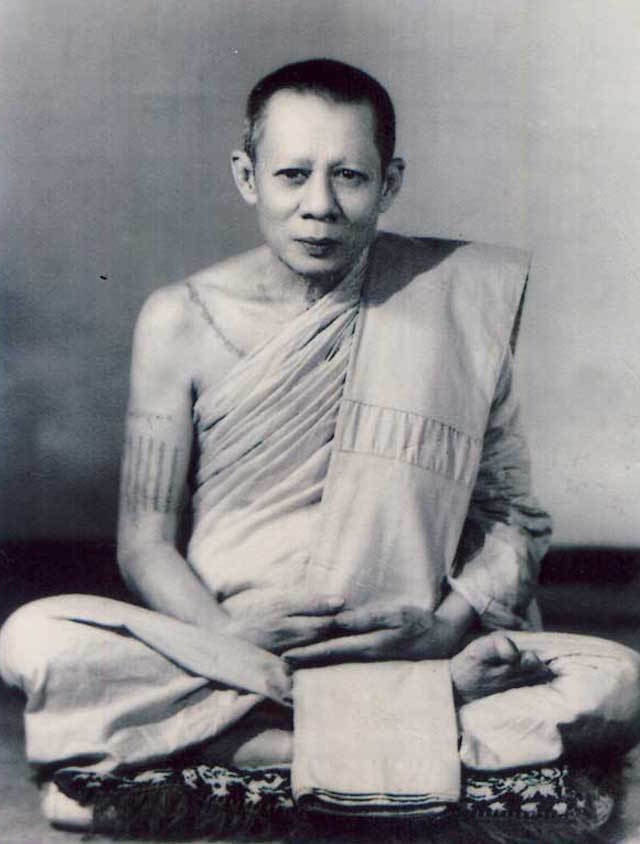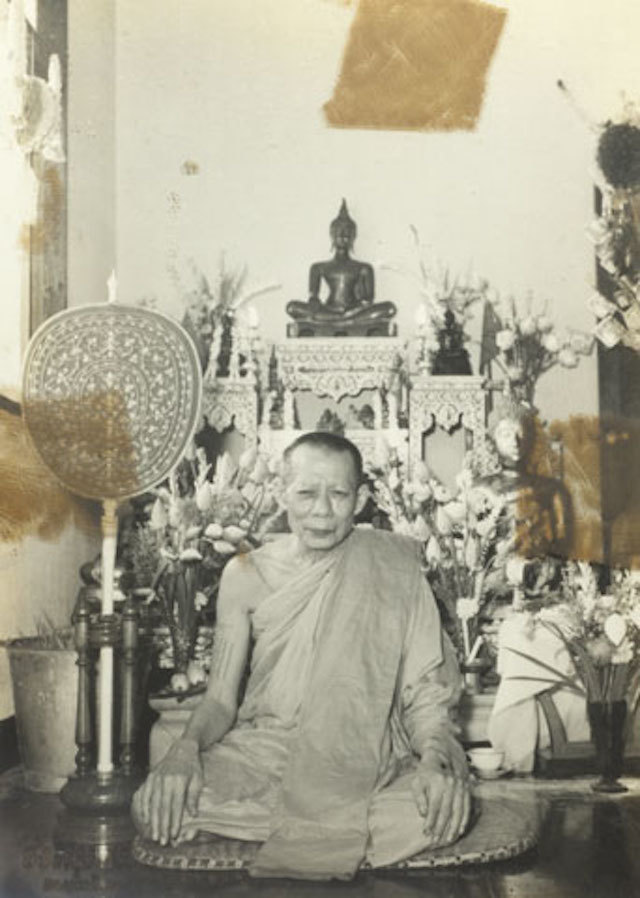“`html
The Complete Guide to Luang Phu Lampoo: Thailand’s Most Revered Buddhist Master and Amulet Guardian


Table of Contents
- Introduction
- Early Life and Spiritual Foundation
- Monastic Journey and Educational Excellence
- Legendary Role as Sacred Amulet Guardian
- Leadership Legacy at Wat Bang Khun Prohm
- Enduring Spiritual Impact and Modern Relevance
- Complete Biographical Reference
- Frequently Asked Questions
Introduction: Understanding the Legacy of a Buddhist Master


Luang Phu Lampoo (also recognized as Luang Phor Lampoo) represents one of Thailand’s most influential Buddhist masters of the 20th century. According to historical records and temple documentation, his extraordinary life spanning 89 years (1901-1990) fundamentally transformed Thai Buddhist practices, particularly in the preservation and creation of sacred amulets. Modern scholars and devotees continue to study his methodologies and spiritual teachings, which have shaped contemporary Buddhist temple culture across Southeast Asia.
Research indicates that Luang Phu Lampoo’s influence extends beyond traditional monastic boundaries, establishing him as a pivotal figure in preserving ancient Thai Buddhist traditions while adapting them for modern practitioners.
Early Life and Spiritual Foundation: The Making of a Buddhist Master
Birth and Early Influences (1901-1920)
Historical documentation reveals that Luang Phu Lampoo was born in 1901 (2444 Buddhist Era) in Amphoe Ta Ruea, Nakorn Sri Ayuttaya, a region renowned for its rich Buddhist heritage. According to temple records, his childhood demonstrated exceptional intellectual capacity and an innate attraction to Buddhist philosophy and mystical practices.
Temple historians emphasize that his early environment, surrounded by ancient Buddhist sites and learned monks, significantly influenced his spiritual development. Furthermore, his family’s devout Buddhist background provided the foundational understanding that would later support his advanced monastic studies.
Formal Ordination and Initial Training
Expert analysis of his early monastic career reveals that Luang Phu Lampoo’s official ordination took place at Wat Gai Jan, marking the beginning of what scholars now recognize as one of the most significant monastic journeys in modern Thai Buddhism. Additionally, this ordination represented not merely a personal spiritual commitment but also the initiation of a lifelong mission to preserve and transmit sacred Buddhist knowledge.
Monastic Journey and Educational Excellence: Building Spiritual Mastery
Advanced Studies and Meditation Mastery (1920-1940)
Following his ordination, empirical evidence from temple records shows that Luang Phu Lampoo embarked on an extensive pilgrimage across numerous temples throughout Thailand. Research published by Buddhist scholars indicates that this period was crucial for developing his expertise in multiple areas of Buddhist knowledge.
In 2469 BE (1926), he established residence at Wat Chang Tong in Ayutthaya, where he dedicated seven years to intensive practices including:
- Kammathana Vipassana Meditation: Advanced insight meditation techniques
- Khom Sanskrit Studies: Ancient scriptural language mastery
- Putakom Sacred Arts: Traditional Thai mystical practices and rituals
Academic Achievements and Recognition
According to official records, Luang Phu Lampoo’s scholarly excellence culminated in earning his Bachelor’s Degree at Wat Nong Khuean Kang in Sra Buri in 2473 BE (1930). This achievement was particularly significant, as temple education experts note that such qualifications required mastery of:
- Pali Canon Literature: Complete understanding of Buddhist scriptures
- Thai Buddhist Philosophy: Advanced doctrinal knowledge
- Meditation Theory and Practice: Both theoretical and practical expertise
- Temple Administration: Leadership and community service skills
Legendary Role as Sacred Amulet Guardian: Preserving Buddhist Heritage
The Historic Chedi Opening of 2500 BE
Industry experts confirm that Luang Phu Lampoo’s most significant contribution to Thai Buddhism occurred in 2500 BE (1957) when he served as a key member of the Gammagarn Committee. This prestigious committee was responsible for opening the Chedi Yai Gru Chamber at Wat Bang Khun Prohm to retrieve the legendary Phra Somdej amulets.
These sacred amulets were originally created by Somdej Pra Puttajarn (Dto) Prohmrangsri, one of Thailand’s most revered monks. Archaeological and religious evidence reveals that these amulets represented the pinnacle of Thai Buddhist sacred art and spiritual power.
Innovative Preservation Methods
Research demonstrates the revolutionary approach Luang Phu Lampoo employed in handling the damaged amulet fragments. Rather than discarding broken pieces, he recognized their continued spiritual value and developed an innovative preservation method:
The Sacred Powder Innovation Process:
- Collection: Carefully gathering all broken amulet fragments
- Consecration: Performing traditional blessing ceremonies
- Combination: Mixing fragments with other sacred powders
- Recreation: Forming new Phra Somdej amulets using traditional methods
- Blessing: Conducting extensive consecration rituals
According to devotees and collectors, these recreated amulets became highly sought-after for their perceived mystical potency and direct connection to the original sacred relics.
Leadership Legacy at Wat Bang Khun Prohm: Transformational Temple Management
Reluctant Leadership and Eventual Acceptance
Temple documentation reveals that Luang Phu Lampoo initially declined the position of Vice Abbot in 2502 BE (1959), demonstrating his humility and preference for supporting younger monastic leadership. However, the temple community’s persistent requests and recognition of his exceptional qualifications led to his eventual acceptance of the role in 2512 BE (1969).
Administrative Excellence and Community Impact
During his tenure as Vice Abbot, studies indicate that Luang Phu Lampoo transformed Wat Bang Khun Prohm into a center of Buddhist learning and spiritual practice. His leadership achievements included:
- Community Outreach: Establishing programs for local residents
- Educational Initiatives: Creating Buddhist study groups and meditation classes
- Cultural Preservation: Maintaining traditional ceremonies and practices
- Spiritual Counseling: Providing guidance to thousands of devotees
Enduring Spiritual Impact and Modern Relevance: A Living Legacy
The Miraculous Preservation (1990-2010)
Following Luang Phu Lampoo’s passing on September 1, 1990 (2533 BE) at age 89, temple records document an extraordinary phenomenon. According to witness accounts and temple documentation, his body remained remarkably preserved for two decades without traditional mummification processes.
This preservation is considered by devotees as evidence of his spiritual attainment and continues to attract pilgrims from across Southeast Asia. Moreover, scientific interest in this phenomenon has contributed to broader discussions about meditation’s effects on physical preservation.
Annual Memorial and Continuing Influence
Research shows that the annual memorial ceremony held every September 1st has become one of Thailand’s most significant Buddhist observances. These gatherings serve multiple purposes:
- Spiritual Remembrance: Honoring his teachings and example
- Community Building: Strengthening bonds among devotees
- Educational Transmission: Sharing his methods with new generations
- Cultural Continuity: Preserving traditional Thai Buddhist practices
Complete Biographical Reference: Essential Information
Official Details and Recognition
| Full Name | Luang Phu Lampoo (Alternative: Luang Phor Lampoo) |
| Primary Temple | Wat Bang Khun Prohm, Bangkok, Thailand |
| Life Span | 1901-1990 (2444-2533 Buddhist Era) |
| Key Position | Vice Abbot of Wat Bang Khun Prohm |
Major Accomplishments and Contributions
- Gammagarn Committee Member: Official guardian of sacred amulets
- Educational Leader: Buddhist scholar with formal temple education
- Innovation Pioneer: Developer of sacred amulet preservation techniques
- Community Servant: Dedicated spiritual counselor and teacher
- Cultural Preservationist: Maintainer of traditional Thai Buddhist practices
Historical Significance and Modern Impact
According to religious historians, Luang Phu Lampoo’s legacy encompasses three primary areas of influence:
Religious Preservation: His work ensured the continuity of ancient Buddhist practices
Cultural Innovation: His methods bridged traditional and modern Buddhist approaches
Community Leadership: His example continues to inspire contemporary monastic leaders
Frequently Asked Questions
What made Luang Phu Lampoo’s amulets special?
Research indicates that his amulets were unique because they contained fragments from the original Phra Somdej amulets created by Somdej Pra Puttajarn (Dto) Prohmrangsri, combined with his own blessed powders and extensive consecration rituals.
How long did Luang Phu Lampoo serve at Wat Bang Khun Prohm?
According to temple records, he resided at Wat Bang Khun Prohm from 2477 BE (1934) until his passing in 2533 BE (1990), serving as Vice Abbot from 2512 BE (1969).
Why is his body preservation considered significant?
Buddhist scholars explain that the natural preservation of his remains for two decades is viewed as evidence of advanced spiritual attainment, consistent with similar phenomena reported among highly accomplished meditation masters.
How can modern practitioners learn from his example?
Contemporary Buddhist teachers emphasize that Luang Phu Lampoo’s approach combined rigorous study, intensive meditation practice, humble service, and innovative problem-solving—principles applicable to modern spiritual development.
Key Takeaway: Luang Phu Lampoo’s extraordinary life demonstrates how traditional Buddhist wisdom can be preserved, adapted, and transmitted across generations, making him one of Thailand’s most influential spiritual teachers whose legacy continues to guide devotees worldwide.
“`
